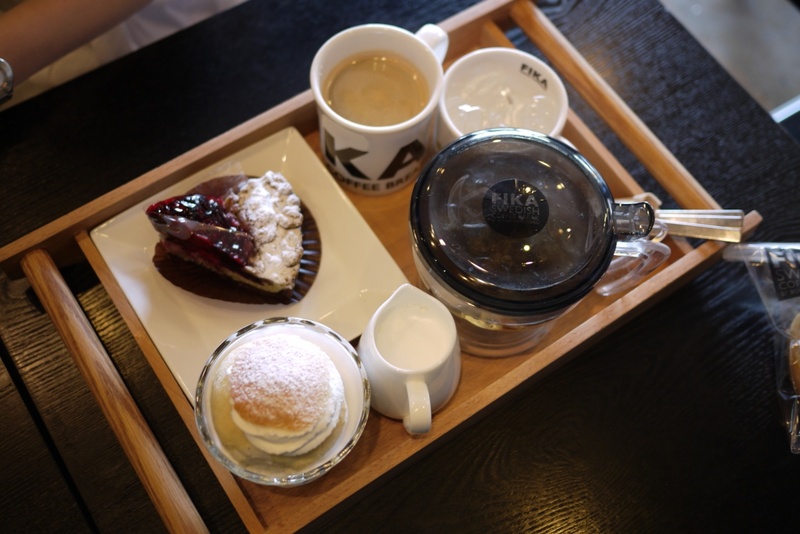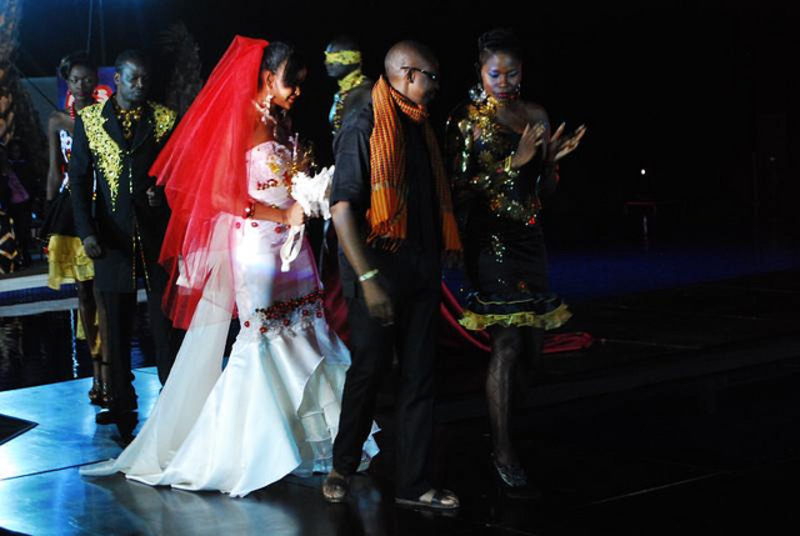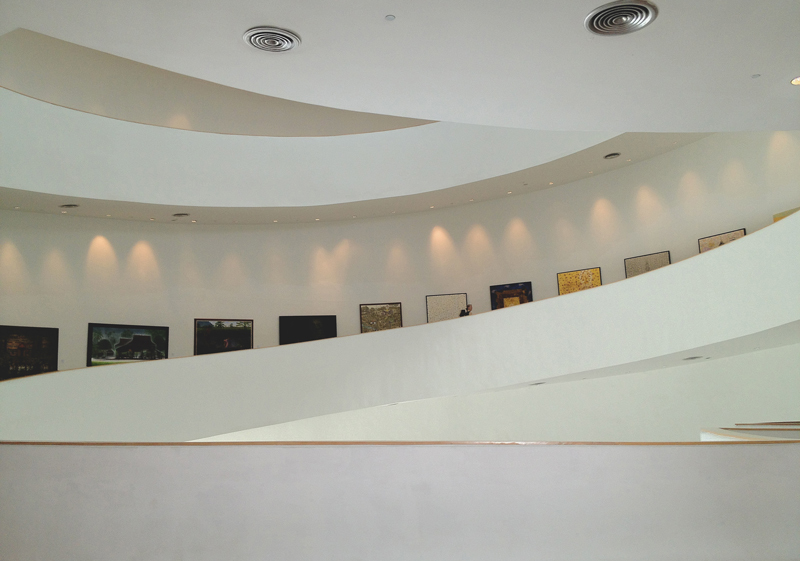Månadens Post
A report from the southern tip of Africa
Publicerat 2006.11.15
by Ida Alfredsson, Cape Town, South Africa
Eleven official languages and an Oscar for the movie Tsotsi. Five pencils in the last The One Show and 12 years of democracy. South Africa is a rainbow nation in every way. It’s a society of sharp contrasts; black, white and coloured, in all patterns. How do you describe a country like South Africa, without critisizing or glorifying? I spoke to Ravi Naidoo, a guru in the design and advertising community in South Africa. Naidoo is the Managing Director for Interactive Africa and the founder of Design Indaba, an annual Cape Town design conference, which has been called “the greatest design conference in the world” by Marcus Fairs in British design bible Icon.
Ida: Ask a Swede to describe South Africa and chances are that safari, townships, an Apartheid past, beautiful nature, sun and colonial style will be mentioned. Is local design and advertising changing the world’s view of the South African brand?
Ravi: I think so. In the last year, South African agencies such as Daddy Buy Me A Pony and FCB, have won Clio and Cannes Grand Prix Awards. There is recognition of the creativity that South Africa is exhibiting. I think we’re living in a very interesting time and epoque. This country is really starting to jam with creativity. The first decade of our democracy started off with people being somewhat sceptical and not too sure about the future. After the development of the constitution there was a new confidence in the country. People became a bit more confident in their own skin. There’s now the whole Proudly South African movement and people are starting to mind their own heritage, their own culture, and are finding their own voice. What’s so exciting in South Africa right now is that there is authenticity. It’’s not trying to out-Milan Milan or out-London London. It’s trying to present to the world a unique voice, and I think the second decade of our democracy is going to be the “purple patch” for creativity. The kind of international acknowledgement we’ve recieved in Cannes Lions, Clio, Oscars, MTV etc, is just a foretaste of what’s to come. In the next few years there will be a halogen spotlight on our country, with international projects like the 2010 Football World Cup, and the whole world will see a lot more of our creativity and our culture, which is a great opportunity. A football game lasts just 90 minutes, but for the rest of the time people will be absorbing our culture, our fashion, our music. So I think we’re in a great space, and South Africa is clearly one of the creative hot spots in the world right now.
I: What is typically South African in design and advertising communication?
R: That’s a loaded question, because South Africa is such an eclectic mix, a patchwork quilt of cultures; you’ve got the Malay, the Indian, the Indigenous and the Colonial influences. It’s such a melting pot of different cultures that no “cookie cutter” model can describe what is quintessentially South African. These cultures and influences need to be remixed and refocused, and many people are doing it. Amanda Laird Cherry, the fashion designer out of Durban, is mining the Indian heritage with modern influences, which makes it a combination of part Bollywood and part African in her new fashion exhibited at this year’s SA Fashion Week. Fashion brand Sun Goddess is taking traditional Xhosa out of Eastern Cape and giving it a contemporary twist. Industrial designer Haldane Martin has converted the traditional Zulu basket weaving into modern furniture in his Zulu Mama creation. What’s happening is a wonderful remixing of the old with the new, the traditional with modernity. If you ask what is quintessentially South African, I don’t think we’’re quite there yet; it is a work in progress. But the things we are starting to see of late give me lots of reason to believe that, because we are faithful to who we are and where we’ve come from, it can become completely unique to the world.
I: Does Cape Town stand out against the rest of South Africa?
R: Cape Town does, in many respects. The city has all the life style issues, which many of us in the creative industry look towards. If you think of why Silicon Valley is what it is out there in the Bay Area of San Fransisco, where they manage to get the geekiest, brightest young programmers to settle, it has a lot to do with a life style issue; the surfing, the nature and so on. One of Cape Town’s best attributes is really its absolutely spectacular geographical luck of being in this great location. It attracts the creative people who want to be able to do everything from working on the computer to hiking up the mountain. Cape Town also has an amazing cosmopolitan character and quite a bit of continental flavour as well. Portugese, Greek, etc will be melded with the new African influence from particularly Congo or West Africa, from Angola as well as the old Malay influences and the traditional San. It’s a great mixture. One of the most exciting colonial remixes happening is seen the example of coffee shop Vida e Caffé, started out of Cape Town, which was recently named one of the hippest coffee chains in the world by Tyler Brûlé, the founder of Wallpaper, in an article for Financial Times.
Cape Town is quite different to the mix that you find in Durban and Johannesburg, and particularly through the film, publishing and advertising industries it is one of the creative capitals of Africa.
I: Lately I’ve seen numerous examples of advertising questioning cultural stereotypes. Is black and white changing?
R: I think South Africa is a pilot project for planet earth. We are changing. What you saw in the past represented the demographics of the advertising industry, which in this country was typically white. Now there is much more diversity. The generation that is coming into the agencies right now, the recent graduates, are what you would call the “born free generation”. It’s a generation really untouched by Apartheid, who went to mixed schools and to the best colleges. It’s an exciting period and I’m looking forward to what will be produced in the ensuing few years. At this year’s Loeries, our own big advertising festival, Grid, a black-owned agency headed by Nathan Reddy, won the design Grand Prix for some awesome work for Virgin Mobile. A changing of the garde is starting to be seen in the advertising industry in South Africa.
I: What is the future holding for South Africa?
R: It’s holding global projects like the 2010 Football World Cup through to other initiatives where South Africans have confidence to flex their creative muscles outside the country. People are starting to sell their products, in stores in Spain, Osaka and Tokyo. Industrial designer Heath Nash, who’s making beautiful work from recycled plastic, is selling his products throughout the world. There’s an excitement and a new found confidence that comes from understanding that you’ve got something new and fresh to add. I think the next phase will be to see South African products on the high streets of the major metropolises of the world.
www.designindaba.com
www.interactive.africa.com
www.sungoddess.co.za
www.haldanemartin.co.za
www.caffe.co.za
www.lightonline.co.za
www.proudlysa.co.za
www.theloerieawards.co.za
www.fcb.co.za
www.9november.co.za
www.gridbranding.co.za
www.safashionweek.co.za
Ida Alfresson är utbildad i strategisk design och kommunikation i New York och Göteborg. Har jobbat som Art Director och Creative Director på reklambyrå i Göteborg, Creative Director på brand agency i Tyskland och kommnikationsstrateg och designkoordinator i kåkstadsprojekt i Sydafrika. Har skrivit boken “Vi & Dom”, där kreatörer och uppdragsgivare intervjuas om kommunikationen dem emellan. Bor för närvarande i Kapstaden och arbetar med varumärkesbyggnation.


